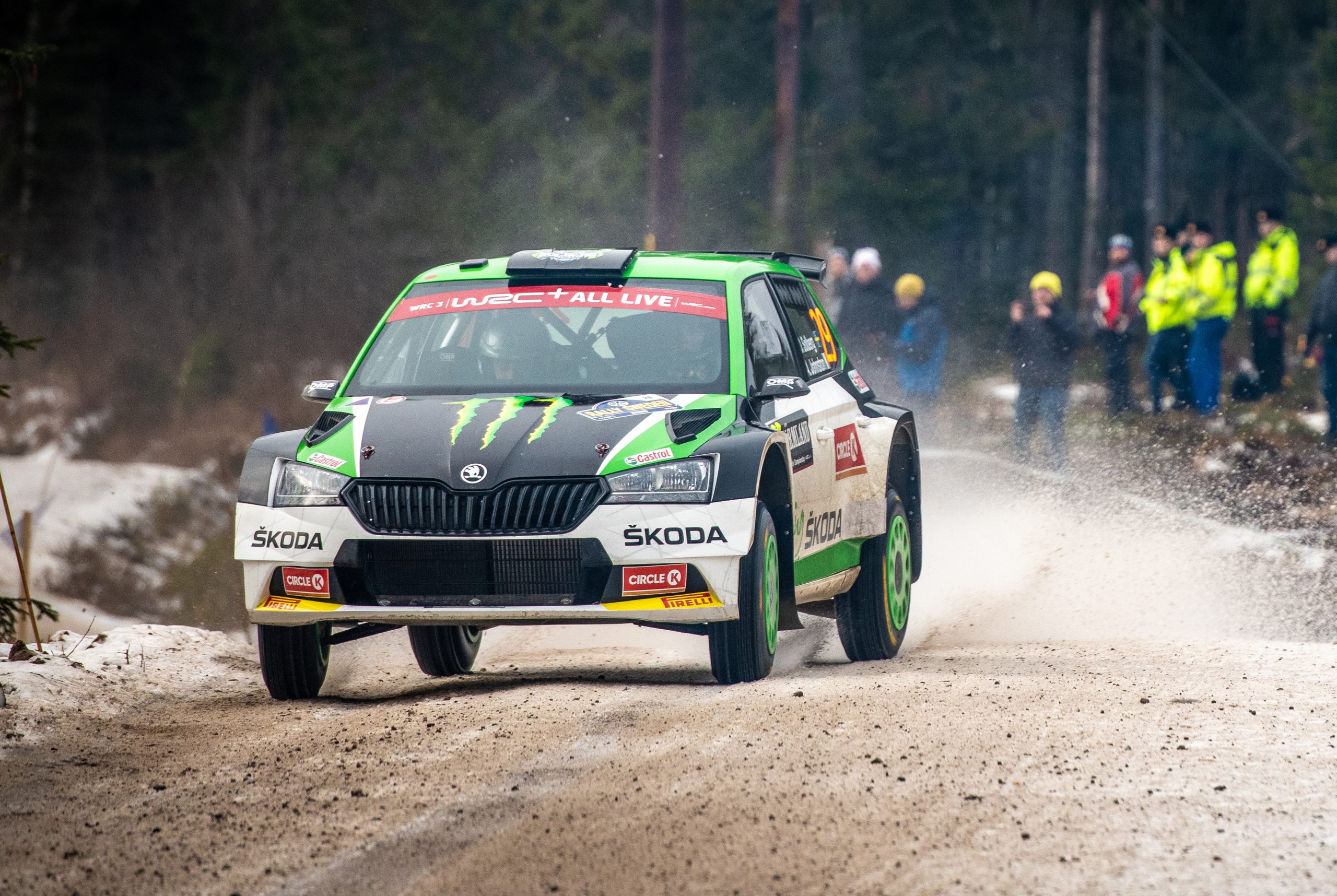
From motorsport to the road with Skoda
Motorsport and rallying always plays an important role in the development of new technologies that eventually make their way into series production cars. At Skoda, innovations like four-wheel drive and powerful as well as efficient turbocharged engines are just two examples of high-tech solutions, which are used not only to improve stage times on rally tracks, but are also used in Skoda road cars.
Christian Strube from Skoda says,“The close cooperation between motorsport engineers and colleagues from technical development is significantly important for us. This cooperation is founded on the highest technical competence, great commitment and love for technology. This excitement and the know how from motorsport is transferred from the rally tracks to our series production cars.”
In total, the ŠKODA Fabia Rally2 evo consists of around 3,000 components – and roughly 40 per cent are derived from road cars, for example the engine block.
As the development of modifications for Fabia rally and production models are often running in parallel, the engineers from ŠKODA Motorsport are sharing the information collected during testing with their colleagues of the ŠKODA research and development centre in Mladá Boleslav.
Sometimes, the influence of the rallying development can be really seen on the production car. The position of the lights on the Fabia road car was influenced by its competitive brother.
In the Rally2 technical regulations, the International Automobile Federation (FIA) defined a sufficient use of serial parts in order to create a rally car category, which is affordable for customer teams.
Also, the FIA limits the sales price, the cap is currently set at around 200,000 Euros. As a consequence, a mix of FIA regulated parts, bespoke motorsport parts, original and modified serial parts are used on the ŠKODA Fabia Rally2 evo.
Turbocharging and direct fuel injection for more power and efficiency
Today’s turbocharging technology was boosted by motorsport applications. Together with direct fuel injection and downsized engines, modern turbochargers are key to fuel efficiency. Engines with relative small displacement on one side deliver ample power and torque. On the other side – which is even more crucial for standard road cars – they use surprisingly little fuel. ŠKODA TSI engine technology is one example of this strategy, today well established throughout the whole ŠKODA product range.
Technology transfer between motorsport and series production is not a one-way street. The race engine of the ŠKODA Fabia Rally2 evo is purely ‘Made in Mladá Boleslav’ but was developed in parallel with the engine of the road car. The 1.6 litre turbo engine is based on the standard 1.8 litre engine used for the ŠKODA Superb in China. It’s fabricated in Shanghai in cooperation with the joint venture partner SAIC. 70 percent of the engine parts, including turbo, fan and alternator, come from standard production.
According to the FIA regulations, which demand a production engine as base for the race engine, the originally 1.8 litre cylinder capacity had to be reduced to 1.62 litres. The engineers of ŠKODA Motorsport achieved this by altering the stroke and using a new crankshaft. Although a 32 millimetres air restrictor and a pop-off valve limit the output, the race engine of the ŠKODA Fabia Rally2 evo produces more than 280 horsepower (212 kW) and 425 Newton-metres of torque.
Body shell with modifications
Compared to a standard Fabia, almost 55 percent of parts used on the body shell of the race car are standard or only slightly modified. There are also special parts, which must be in line with FIA regulations. ŠKODA Motorsport is not using the whole road car body shell for the really complex process of building a rally car. The competition body shell is built from scratch including roll cage and all other modifications for racing purpose. The whole structure of the rally car must be rigid enough to resist big jumps and heavy g-forces, which can reach up to 2 g – especially under braking.
Also in the interior, there are a lot of differences between the standard production Fabia and the competition version. The racing seats of the rally car are homologated for ten years, the six-point seat belts/harnesses for five years. In case of an accident, they must be replaced. The shape of the dashboard is based on the series production part, but the information displays are totally different. While the passengers on board the road car benefit from the comfort of air conditioning, the rally crew gets some fresh air via the air vents below the dashboard. On winter rallies, the crew has a heating system on board.
Electronics on board – big brother is watching
Every modern road car is equipped with an ECU (electronic control unit), which is controlling the electronics, sensors and the drivers assist systems. In the workshop, it allows as well to detect and to analyse a possible malfunction of the car and helps repairing it. In a rally car, the ECU integrated data logger not only provides data for the team’s engineers the driver can precisely analyse his driving style, for example when he shifts gears, when he brakes and how he accelerates out of corners. The race engineers can as well supervise the technical status of the car and are always up-to -date, when additional maintenance is advised.
Equipped with a 5-speed sequential gearbox from the manufacturer Xtrac, the ŠKODA FabiaRally2 evo accelerates from 0-100 kph in around 3.6 seconds on dry tarmac. While the suspension on the series model of the Fabia offers precise handling and is focussed on a maximum of driving comfort, the rally brother’s suspension is designed to guarantee maximum performance. A suspension with MacPherson struts on all four wheels with a maximum of wheel travel and two basic setups – one for gravel, one for tarmac stages – provide optimum traction.
